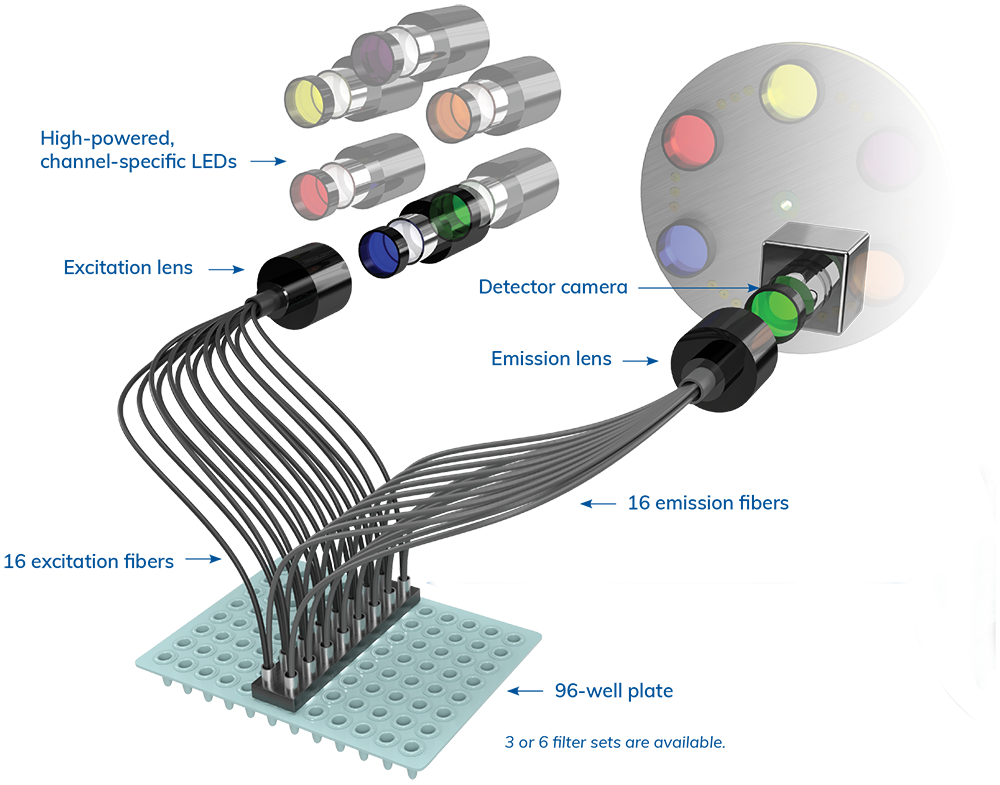The Fiber Optic system used in the PCR instrument includes excitation light source, excitation light path, fluorescence collection and detection light path, and it is the core module that determines the weak fluorescence detection capability of the system. Usually, the intensity of the excitation light is more than 1000 times of the fluorescence intensity. Therefore, the detection of the fluorescent signal in the PCR instrument belongs to the acquisition of the weak signal under the strong background signal.

In the traditional oblique, transmissive and confocal optical system architecture modules, various optical components such as lenses, mirrors, and prisms are integrated, which requires a certain mechanical structure to assist in fixing, which increases the difficulty of processing, and reduced instrument stability. In addition, the traditional optical system is to irradiate excitation light into the reaction sample in the sample cell from the upper part of the base, and then receive the fluorescence instantaneously excited by the reaction tube from the upper part of the base to realize detection. In this process of excitation light transmission and emission fluorescence reception, the system has a large loss of light energy, poor light collection ability, and poor transmission efficiency, resulting in a decrease in fluorescence detection sensitivity. In order to maximize the optical signal throughput and reduce the transmission loss, we need to choose a Fiber Optic Bundle system that is different from the traditional combined lens type.
